The latest lesson deals with Extensions beyond the 7th chord. Arpeggios containing the 9th, 11th and 13th are all covered
Recap
So far, we have covered triads and 7th chords, which we built from stacking various combinations of thirds. This system of stacking thirds can be extended beyond the 7th and if we follow it to its logical conclusion then we find that the building of a chord takes us through every scale degree in order of odd numbers. The 9th, 11th and 13th are reffered to as extensions and are not often played altogether at once as each note provides its own colour and sound.
In C, these intervals are:
C E G B D F A
1 3 5 7 9 11 13
The 9th, 11th and 13th are compound names for the 2nd, 4th and 6th.
C D E F G A B
1 2 3 4 5 6 7
9 11 13
When we build an extended chord, we use each note in order up to the extension we want.
So a 9th chord would be:
1 3 5 7 9
An 11th chord would be:
1 3 5 7 9 11
And a 13th chord would be:
1 3 5 7 9 11 13

As there are so many variations of extended chords, there is no point at looking through them all at once. An easier way to memorise this is by remembering that the 9th, 11th and 13th are always classed as major or perfect unless indicated otherwise.
A C major 7 chord would be extended with the major 9 (D), the perfect 11th (F), and the major 13th (A).
A C minor chord would use exactly the same extensions of D, F and A, as would a C7, Cm7b5 or C augmented 7th.
We have to change the chord symbol to indicate any alterations that aren’t major or perfect. For example, a b9, #11 or b13 etc. would have to be shown in the chord symbol.
Extensions are built from 7th chords and are named accordingly. The number 7 is changed to the number of the extended chord – a major 7 chord is naturally extended to a major 9, major 11 and then a major 13 chord. A minor 7 is extended to a minor 9, minor 11 and then a minor 13 chord.
Here is the notation for the more common variations of extended chords:
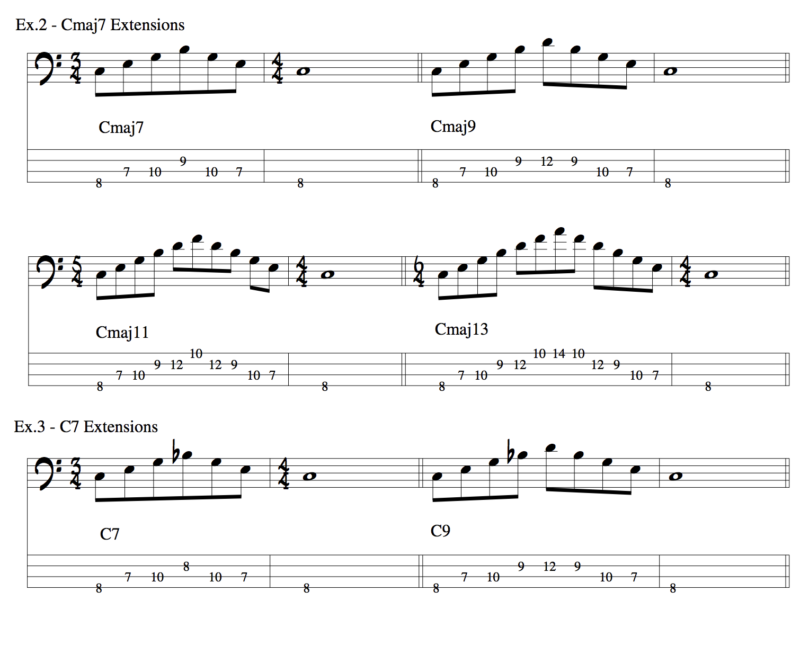

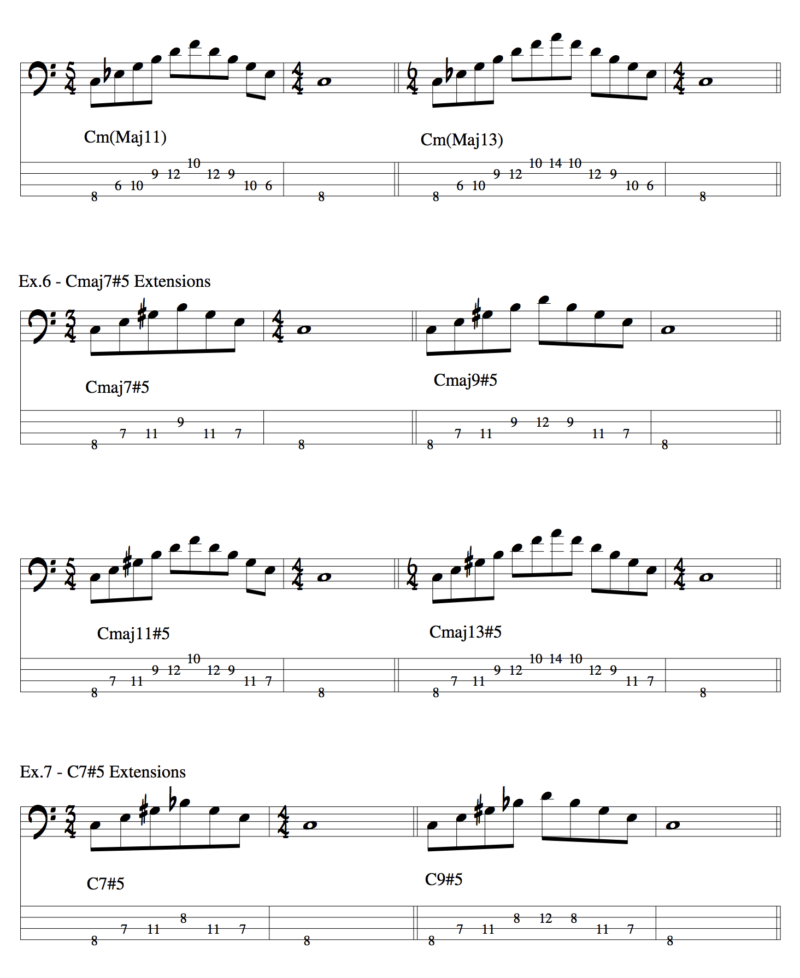
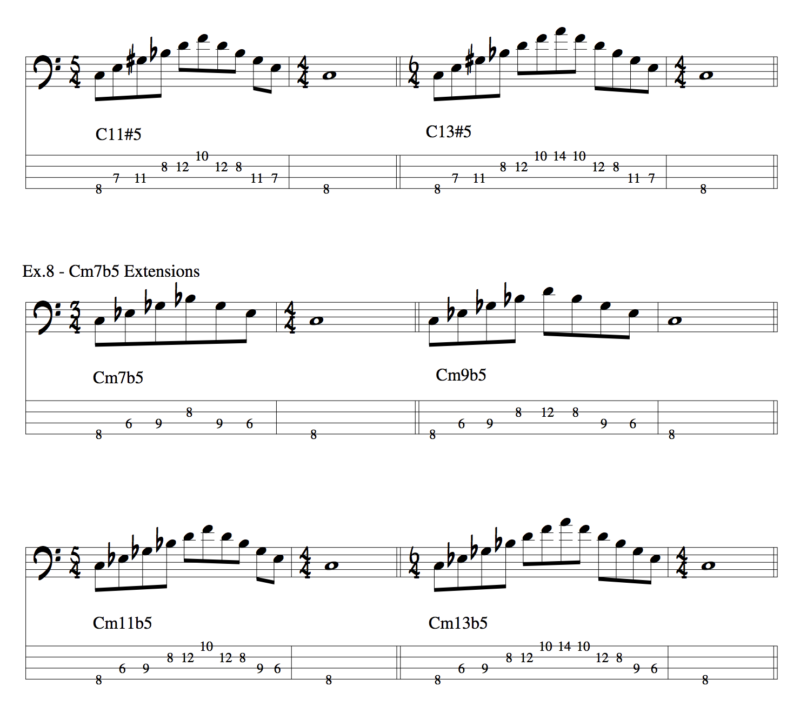
Extensions Practice Routine
Now we’ve covered each extension, we can create an exercise for practising these arpeggios:

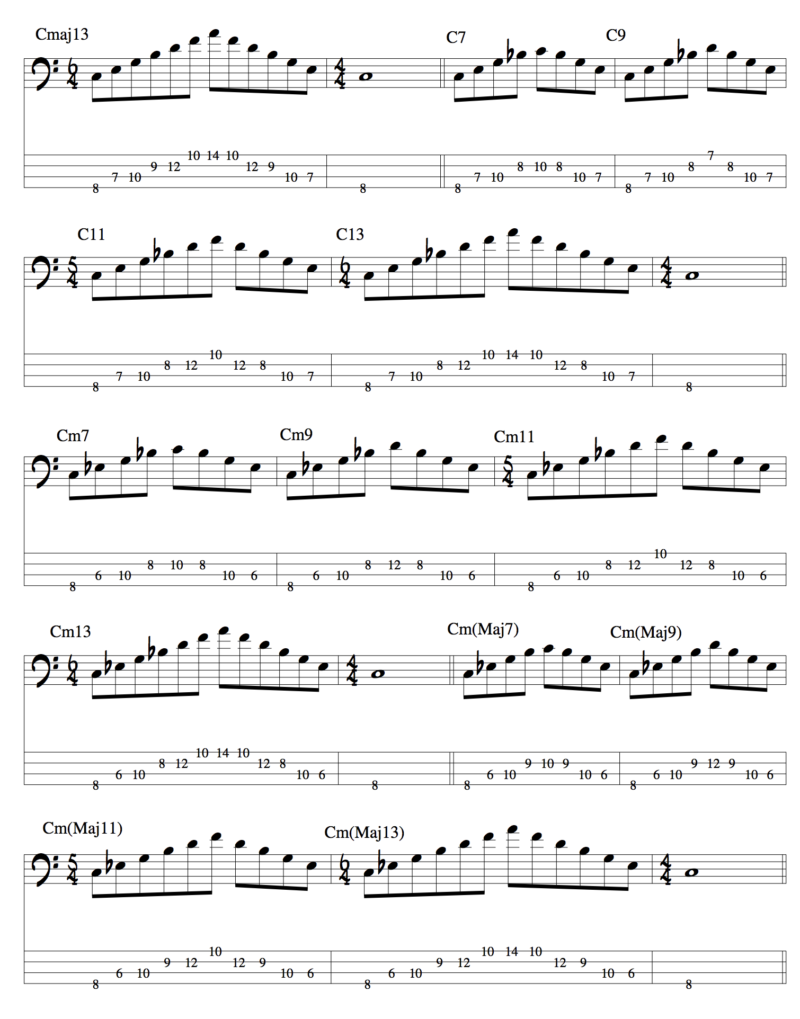
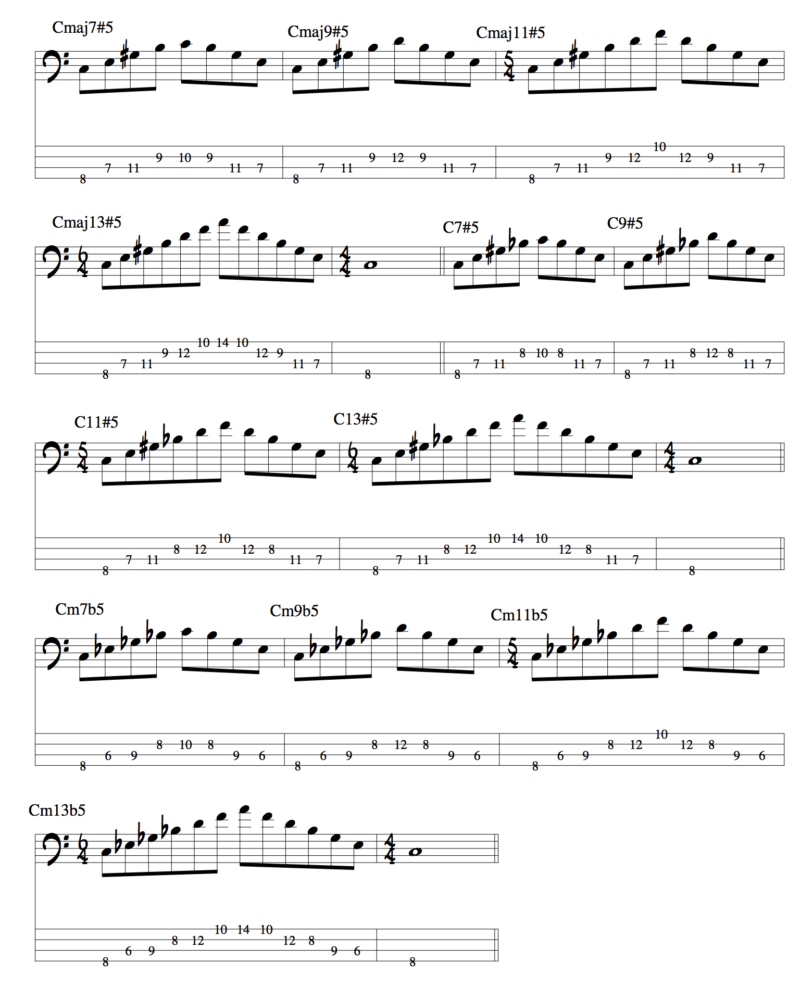


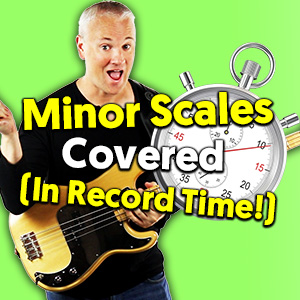


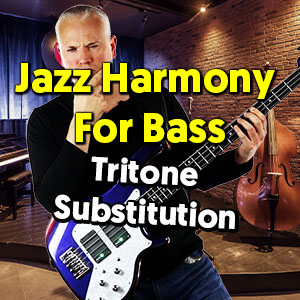
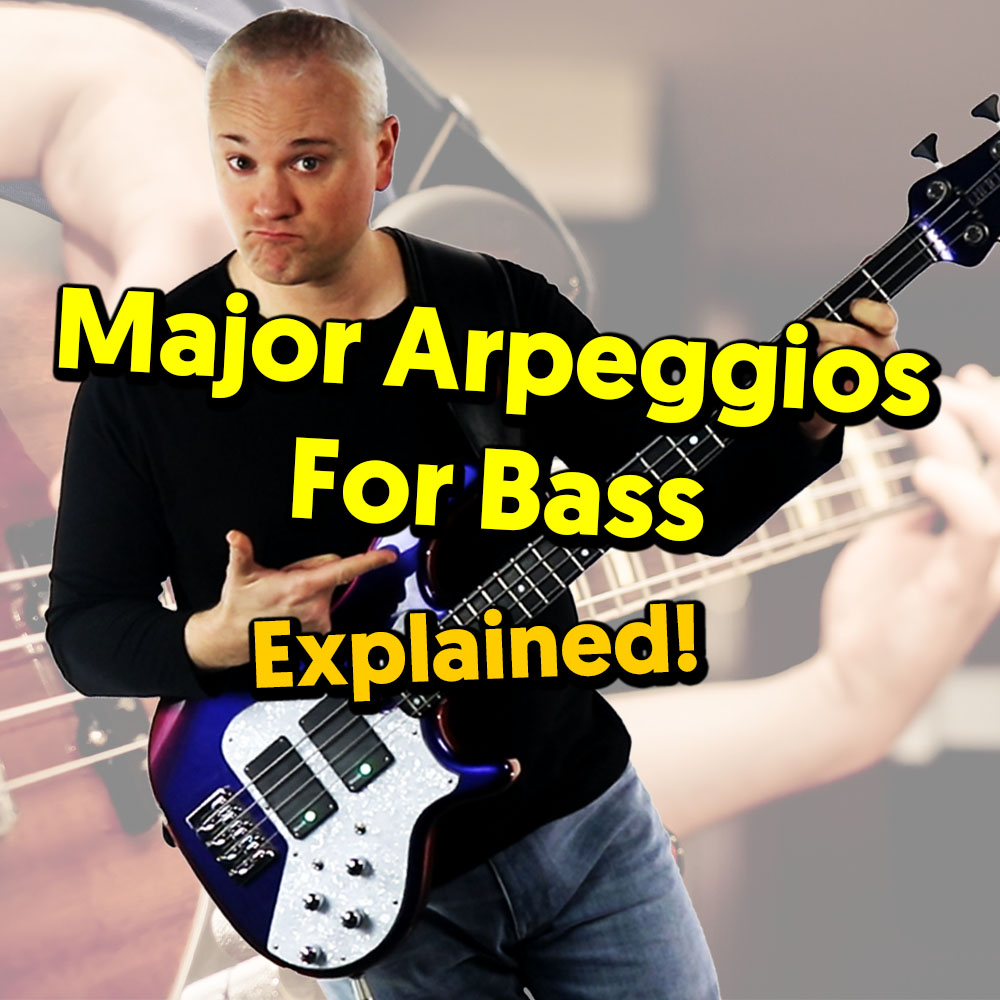

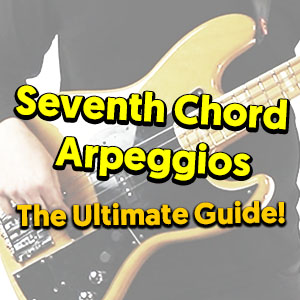


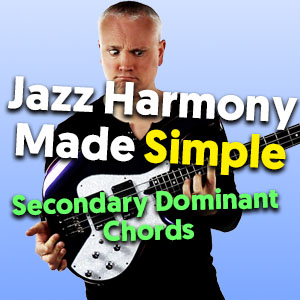
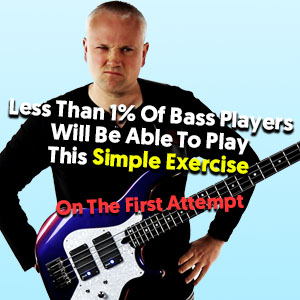
Hi Mark,
Great lessons as always, your really helping me understand music theory more than any other material I use.
Just wanted to ask one question; when playing a minor third I always use my fourth finger 3 frets up from the root rather than the way you use by shifting up a string and back 2 frets. I find this easier as I don’t have to move my hand around as much.
Is this a good way to play a minor 3rd or will this cause me any issues further down the line of learning more music theory?
Cheers
Ben
Thanks Ben. You’re absolutely right to learn the minor 3rd pattern that way but it’s also important to learn them on one string too. For every interval there are at least two common ways to play them and they also tie into the 3 scale shapes I described in my Tri Shape lesson. Learn each interval going up the neck and also going down the neck. So a 3rd (major or minor) can be played on the same string as the root going up the neck and also on the neck string up going down the neck. The fourth is mainly played in one way but then the perfect 5th can be played 2 frets up on the next string or 3 frets down, 2 strings across eg. root C on 8th fret of E string and G on 5th fret of D string. Learning each interval shape in this way helps to see intervals within all types of lines more clearly.
Great lesson. However, it would be nice if you covered the fingering you like to use for these arpeggios. It’s hard and tedious to pick it out from the video as you go over it so quickly. Do you always use the same fingering going up as you do coming down? For example the C-Major 9, it looks like your fingering is 1-2-4-1-4. What’s the fingering coming down? I don’t see it in the PDF either. It was useful when you included the fingering in the 7th chord PDF. Thanks Mark!
Great lesson Mark. You make the extended chords simple to understand compared to other on line sources and books. Thanks again.
Hi Mark. Great lesson, I’m new to your site and i am thoroughly enjoying the lessons. You explain things so well. Cheers.
Mark, thanks for a great lessons!!
I understand how to build a chord extensions, but how we may apply them? For example, if we play on a guitar maj7#11 chord that is IV (lydian), how will sound such note as perfect 11? We should play #11 as I think, because it will sound more harmonically. And m7b13 chord, that is VI (natural minor)? In this case, I should have played b13 instead of perfect 13.
thank u mark wonderful lesson
Hi Mark, I was taking a look at the lesson material for this video and I have found a mistake in the C7 extensions. C7 is tabbed correctly, but C9/11/13 all have the 7th scale degree raised causing them to be major.
I have noted the same Jesse
Top ten lessons, Mark on The Chord Construction series. It’s helped me big time to see through the mist.
A million thanks,
Bob Eberlein,
Leicester.
Such a great lesson Mark. Thanks as always.
I just cannot find the backing track of this lesson!
Great lesson mark!
I just can’t find the backing track!
Hey Mark, I just wanted to let you know there is a mistake in the transcription for the Example 3 (Extensions of C7). The bass tab shows Maj7 instead of Dominant 7. Thanks!
Mark God bless your soul. Truly an amazing teacher
Hello Mark. Thanks for the great lesson again but I’m struggling to grasp the sequence after the 7th. As you’ve described in your previous courses it’s about stacking a combination of 3rds. In C major it was a Major 3rd (C to E), followed by a Minor 3rd (E to G), followed by a Major 3rd (G to B). Going further up it seems to be a Minor 3rd (B – D) (7 – 9), followed by another Minor 3rd (D- F) (9 – 11) and then a Major 3rd (F – A) (11 – 13). i.e. 2 Consecutive Minor 3rds. Just wondering what the theory is behind the consecutive Minor 3rds.
OK. I think the penny’s dropped. They’re always compounds of the 2nd, 4th and 6th. Irrespective of the starting 7th chord shape. Think I’ve got it.